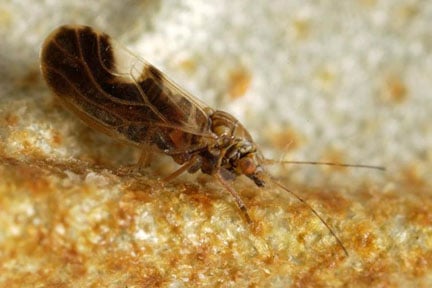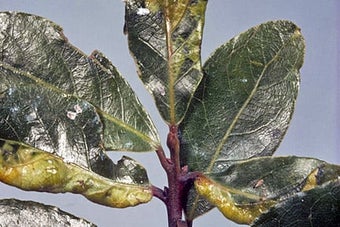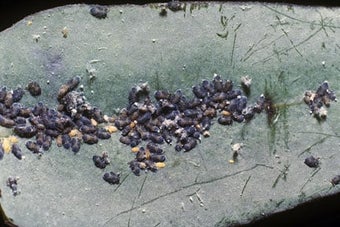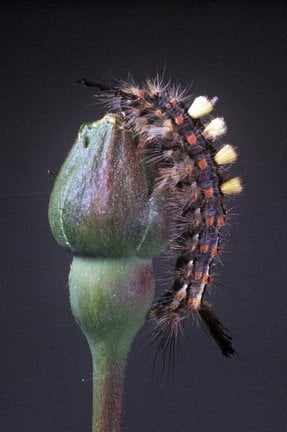
Quick facts
Common name - Elaeagnus sucker
Scientific name - Cacopsylla fulguralis
Plants affected - Elaeagnus × ebbingei, E. pungens, E. macrophylla, E. glabra, E. cuprea and E. oldhamii
Main symptom - Distorted leaves, honeydew and sooty mould
Most active - February to September
What is Elaeagnus sucker?
The psyllids or plant suckers are a group of sucking true bugs (Hemiptera). There are more than 40 species found in Britain. Many species produce a white waxy secretion during the immature (nymph) stages and some cause distortion and galling to host plants. Most however, do not cause any significant damage to garden plants. More information on Psyllids from Britain can be found at .
Elaeagnus originates from eastern Asia and was first detected in Britain in 2002. It has spread rapidly and now occurs throughout most of England and parts of Wales. It was feared that this sucker would become a major problem for Elaeagnus however, the high populations seen soon after the insects arrival, no longer occur. This suggests that natural enemies may be having an effect on this insect helping to keep it at levels at which serious plant damage does not occur.
Symptoms
Plants with large populations of elaeagnus become covered with honeydew, a sugary excrement from the suckers, on which can grow a black sooty mould . New growth is often distorted and some damaged leaves may drop off; this type of damage is uncommon.
Management
Eleagnus can affect the appearance of Eleagnus but does not usually reduce plant vigour and so control is not necessary. Plant suckers can be a part the a healthy garden supports.
- Often suckers do not affect the growth or vigour of plants and so should be tolerated
- Encouraging predators and other natural enemies of suckers, in the garden, such as birds , ladybirds , wasps and ground beetles will help keep damage to a minimum
- If necessary distorted leaves can be removed from the plant however, this may cause more damage than the insect
Biology
Adult elaeagnus are 2-4 mm long and have two pairs of have transparent wings with black shading which are held roof-like over their abdomen when at rest. The orange-yellow nymphs are wingless and flattened so the width of their bodies is much greater than the depth. Older nymphs have large pads on the margins of the upper thorax where the wings will develop.
It has several generations during the summer with the largest populations occurring on the new growth in the spring. It probably overwinters as eggs which hatch in mid-February.








